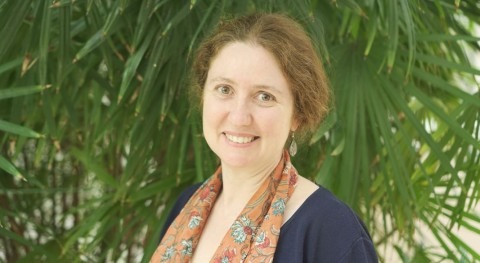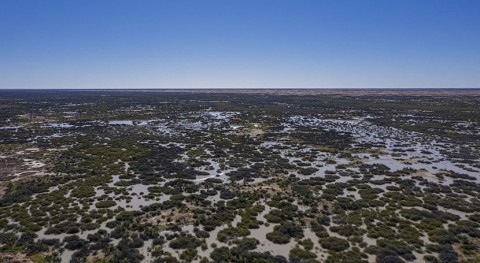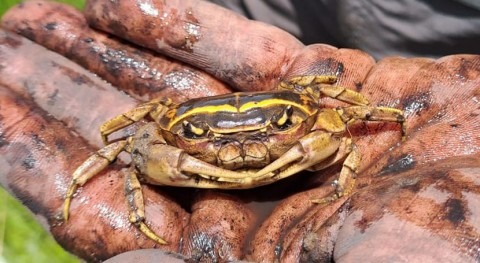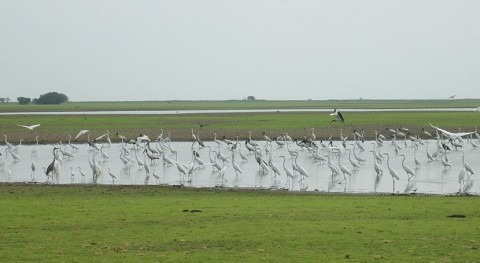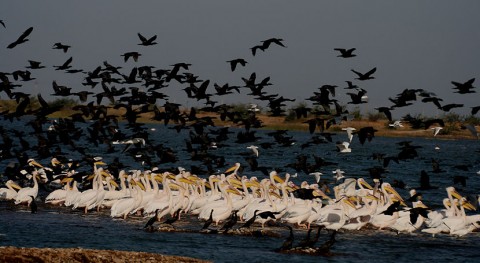Morocco has designated 12 new Wetlands of International Importance. Their locations range from the heights of the Atlas mountains to the Atlantic and Mediterranean coasts. A number of these Ramsar Sites are also UNESCO Biosphere Reserves or Global Geoparks. The Ramsar Administrative Authority of Morocco was supported in the designation process by WWF-North Africa / Morocco.
Assif Réghaya-Aït Mizane (Site no. 2371) is located on the northern slope of Jbel Toubkal, the highest mountain in North Africa. It includes a permanent river, Oued Réghaya, and further upstream a fresh and fast-flowing mountain stream, Assif n’Aît Mizane, each classified among the Sites of Biological and Ecological Interest of Morocco. This permanent river ecosystem, very rare in North Africa, is rich in wildlife.
Haut Oued Lakhdar (Site no. 2372) includes two upper tributaries of the Lakhdar wadi on the northern slopes of the Central High Atlas, at or above 1,350 metres in altitude. It is one of the rare permanent mountain river ecosystems in North Africa that is still in a natural or semi-natural state. The sustained water flow in summer makes the Site a biodiversity and conservation hotspot, with many species endemic to the local area or to North Africa.
Assifs Ahançal-Melloul (Site no. 2378) comprises the rivers (wadis) of Ahançal and Melloul, between 800 and 2,000 metres altitude in the the Central High Altas. The Site is one of the few remaining near-natural free-flowing mountain river ecosystems in the Maghreb. It contributes to the preservation of at least two endemic or threatened species, the Atlas barbel (Luciobarbus ksibi) and the Barbary macaque (Macaca sylvanus).

Côte des Bokkoyas. Credit: CAR-ASP & Université de Séville, 2014
Assif Mgoun (Site no. 2376) in the High Atlas consists of the permanent central stretch of the Mgoun river and its temporary upstream extension, as well as four small permanent tributaries. The high-altitude cold springs and brooks provide ideal conditions for the reproduction of endemic fish such as Draa trout (Salmo multipunctata) and Draa barbel (Luciobarbus lepineyi).
Oued Tizguite (Site no. 2375) is on the northern edge of the limestone plateau of the Middle Atlas. The rich riverbank and aquatic vegetation includes at least two threatened species: the Atlas daisy (Anacyclus pyrethrum) and the Atlas cedar (Cedrus atlantica). There are about 200 aquatic animal species, including endemic or rare insects such as the stonefly Protonemura dakkii and the caddisfly Agapetus dolichopterus.
Lacs d’Imouzzer du Kandar (Site no. 2374) consists of three karst lakes near the town of Imouzzer Kandar in the Middle Atlas. They combine a wide range of habitats which support a great diversity of flora and fauna. The wetland is a particularly important wintering place for white-headed duck (Oxyura leucocephala).
Côte des Bokkoyas (Site no. 2379), located on the Mediterranean at the Eastern end of the central Rif mountain range, features a long series of sea cliffs interrupted by valleys, and the adjacent marine waters. This coastline is known for its red coral (Corallium rubrum). The Ramsar Site shelters a large number of threatened species, both terrestrial and marine, such as the dusky grouper Epinephelus marginatus and the loggerhead turtle Caretta caretta.
Lagune et Barrage de Smir (Site no. 2380) consists of a coastal marshy lagoon on the small coastal alluvial plain of the Smir wadi (river), and a reservoir less than ten kilometres upstream. There are threatened species such as the common pochard (Aythya ferina) and the North African fire salamander (Salamandra algira). The Site lies on the East Atlantic flyway, and is a key stop for about 60 species of Western Palearctic waterbirds during their passage and also over the winter.
Littoral de Jbel Moussa (Site no. 2381), on the southern shore of the Strait of Gibraltar, where the Atlantic meets the Mediterranean, is an important area for the passage of sea turtles, birds (raptors and passerines) and mammals, and as a spawning ground for several fish species. Notable terrestrial mammals include the endangered Barbary macaque.

Cap Ghir-Imsouane. Credit: Mohamed Aourir, 2018
Cap Ghir-Imsouane (Site no. 2373) comprises a coastal strip at the foot of the High Atlas mountain range. It covers a wide range of marine, estuarine and terrestrial habitats influenced by the Atlantic Ocean and also the Mediterranean Sea and the Sahara, with an exceptionally rich biodiversity and a high rate of endemism. The wetland lies on the East Atlantic flyway, and provides a nesting and wintering site for many migrant Palearctic birds.
Oued Assaquia Al Hamra à La’youn (Site no. 2382) consists of four large areas, including a swamp and an estuary. The Site plays an important role in the life cycle of Western Palearctic water birds, as a migratory stopover and wintering area. It hosts threatened water birds such as the marbled teal (Marmaronetta angustirostris) and the common pochard.
Côte Aftissate-Boujdour (Site no. 2377) covers some 50 kilometres of coastline to the south of the town of Boujdour. The wetland provides a stopover point for Palearctic seabirds, waders and land migrants, especially passerines. In winter, species such as the lesser black-backed gull (Larus fuscus) are present in populations greater than 1% of their biogeographic populations. The dry areas of the Site, strongly influenced by the ocean, are home to several endemic and rare species such as the endemic gecko Saurodactylus brosseti.




